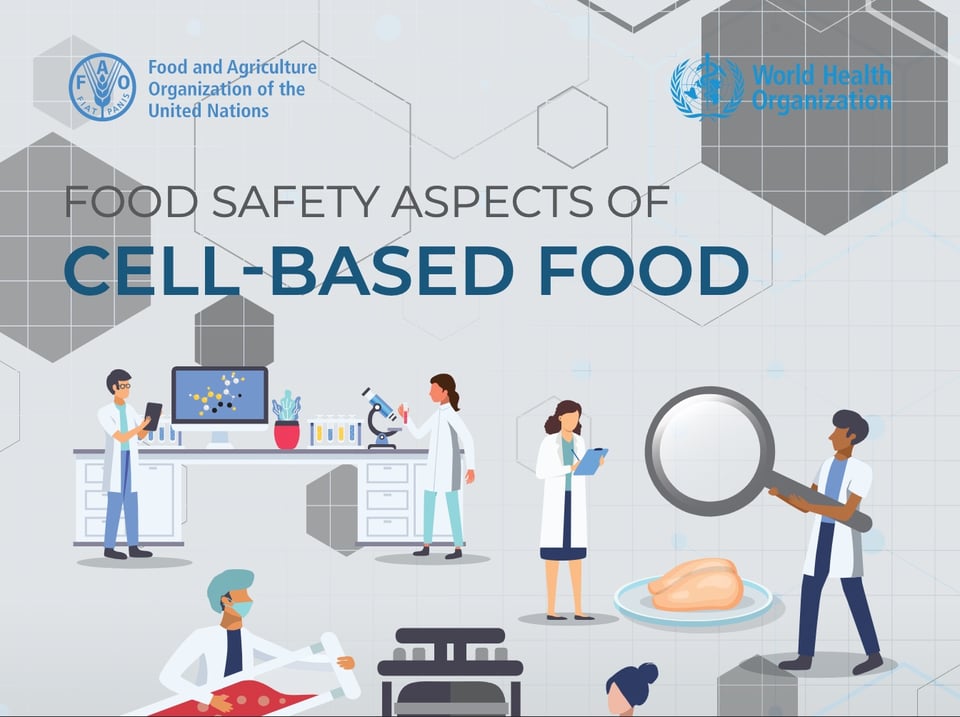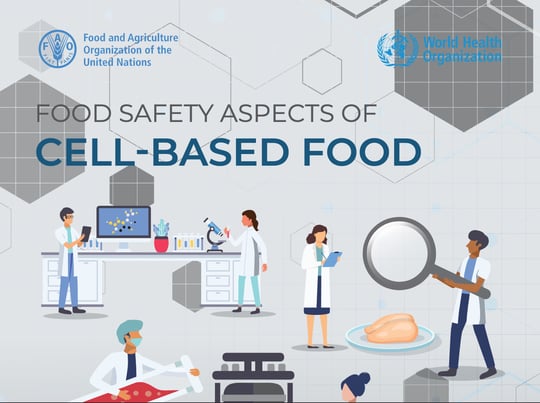
As cell-based food production continues to grow, the need to address the question of food safety increases. The Food and Agriculture Organization of the United Nations (FAO) recently published a document addressing the safety of cell-based foods. Here's what you need to know.
Terminology issues
Regulatory bodies, industry, academia, and consumers may all prefer different terms for cell-based foods. The FAO document defines cell-based food as products involving culturing cells isolated from animals, excluding plant cell cultures or microbial fermentation. The document recommends that national competent authorities establish clear and consistent terminology that fits within their national and language contexts.
Production processes
Understanding the production processes of cell-based foods is crucial for ensuring food safety. The FAO document outlines four steps for animal cell-based food production:
- Cell selection,
- Production,
- Harvesting, and
- Food processing and formulation.
Global regulatory frameworks
Cell-based food is specifically addressed in food safety regulations and/or guidelines in only three countries/economic zones: the EU, Singapore, and the USA. The EU's premarket authorization processes have been significantly complicated and delayed by the Transparency Regulation 2019/1381. Singapore was the first to authorize cell-based foods, while the FDA in the USA has completed two premarket consultations but has yet to have any animal cell-based foods available for sale as of March 21, 2023.
Food safety hazards
A total of 23 experts formed the Technical Panel for Expert Consultation to conduct the first global food safety hazard identification of cell-based food. Hazards were identified in all four stages of cell-based food production, but many are common with conventionally produced food. However, focus needs to be placed on the specific materials, inputs, ingredients, and equipment unique to cell-based food production.
Other potential concerns
The panel also considered potential concerns, such as the survival of cells after consumption or novel microorganisms propagating from species that are currently not consumed. These potential concerns were considered of very low probability or not consistent with current scientific understanding.
Risk communication and building consumer trust
Consumers may encounter marketing campaigns and a lot of information that they don't understand when it comes to new cell-based food. Regulatory authorities can provide information for the public to understand food safety aspects of cell-based food. Investing in research and development to understand whether the alleged benefits in increased sustainability can be realized is also crucial.
Conclusion
Cell-based food is a growing industry with great potential for sustainability, but ensuring its safety is paramount. The FAO's document on the safety of cell-based foods is a valuable resource for understanding the potential hazards and regulatory frameworks involved in this emerging field. At Biosafe, we're keeping a close eye on the development of cell-based foods and are prepared to provide expert guidance and support to our clients as they navigate this rapidly evolving industry.
See the document: FAO & WHO. 2023. Food safety aspects of cell-based food
EFSA will also be conducting an academic seminar for all stakeholders interested or involved in the risk assessment of cell culture-derived foods and food ingredients. The meeting is taking place in Brussels, Belgium on 11-12 May. The plenary sessions will be web streamed. There is no need to register to follow the web streaming.
You can read more here and get the link to watch the web streaming nearer the event.
If you need a safety assessment of your cell-based food, contact us.









